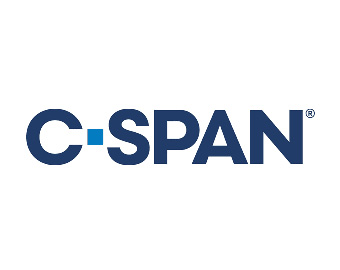Practical, Politically Realistic Proposals to Improve the Often – Dysfunctional Federal Budget Process.
A grant from The Hewlett Foundation’s Madison Initiative provided most of the funding for the project,
supplemented by a grant from the Stuart Family Foundation.
The Vision
In 2016, Convergence brought together 23 ideologically diverse stakeholders representing an array of interests for the Building a Better Budget Process Project (B3P) Dialogue to identify practical, politically realistic proposals to improve the often-dysfunctional federal budget process.
The Problem
Each passing year brings new evidence of the need to repair the process for managing the $4 trillion U.S. budget. Budget resolutions and spending bills narrowly pass, often very late, with lukewarm promises of hammering out priorities in the following budgeting cycle. It has been more than 20 years since all appropriations bills were passed prior to the beginning of the fiscal year. With so many missed deadlines and insufficient attention paid to longer-term budget priorities and oversight, it is obvious the process needs to change.
A few themes emerged from the project:
- Elections drive outcomes.
- Credible information, provided at the right time, matters.
- Effective budget institutions are crucial.
- New norms are needed to break bad habits.
In FY 2022 the government spend $6.27 trillion. (treasury.gov)
Current US fiscal debt is $31.31 trillion. treasury.gov
In 2022, the National Debt was 124% of the nation’s GDP. treasury.gov
The group agreed on a set of nine principles that a new process should encompass. They believe, among other things, that the process should cover all forms of spending and revenues and be completed on a predictable timeline. The process should be informed by high-quality and non-partisan information and should not tilt toward one ideological or policy outcome.

Convergence Consensus Solutions Blueprint
After 16 months and 14 meetings, we released the Convergence Building a Better Budget Process report at the first ever Better Budget Process Summit, sponsored by the Committee for a Responsible Federal Budget.
The 2018 report outlined five recommendations to improve the transparency, predictability, and comprehensiveness of the budget process.
A Budget Action Plan
Negotiated by the President and Congress at the beginning of a new Congress and enacted into law—to synchronize the budget cycle with the electoral cycle and to change expectations for the process. The plan would make certain key fiscal decisions – setting discretionary funding levels and adjusting the debt limit, for example – for a two-year period.
A Fiscal State of the Nation Report
Published every four years at a key point in the national election cycle, to make the federal budget more accessible to the American public and elevate the discourse about the country’s finances.
A Review of the Performance of Portfolios
A review of the performance of portfolios of federal programs that involve long-term or inter-generational commitments (e.g., retirement security, health coverage, education or national security). This review conducted by Congress, through the Government Accountability Office, would reinforce the importance of the long-term effects of budget decisions.
Strengthening the Budget Committees
Revising the membership rules and assigning responsibility to create new expectations for the budget process so that Congress and the public can expect more timely action on budget decisions.
Investment in Agencies
Investment in agencies that support the congressional budget process, including the Congressional Budget Office (CBO) and the Joint Committee on Taxation (JCT), so these institutions can continue to provide high-quality and independent information the nation relies on in making budgetary choices.
Project Outcomes
The proposals received considerable attention on Capitol Hill and were well-received by Members of Congress on both sides of the aisle.
November 2021
The House passed, with broad bipartisan support, H. Con. Res. 44, the Fiscal State of the Nation Resolution, introduced by Representatives Kathleen Rice (D-NY) and Andy Barr (R-KY). The resolution requires the Comptroller General to present the report in an annual joint hearing of the House and Senate Budget Committees and open to all Members of Congress. The resolution aligns with the recommendation advanced by the Select Committee.
October 2020
The Select Committee issued a report, with unanimous bipartisan support, that included 97 recommendations to make Congress work better for America. One chapter of the report, “Reform the Budget and Appropriations Process,” outlines the Committee’s recommendations for improving the budget process. The proposals incorporate most of the elements of the Building a Better Budget Process consensus recommendations, including a Fiscal State of the Nation report that would allow Members of Congress to “have access to nonpartisan information about the many factors contributing to the nation’s debt and deficit in order to develop sound fiscal policies and meet our long-debt and deficit reduction.”
September 2019
B3P participants testified again about their proposals, this time in front of the U.S. House Select Committee on the Modernization of Congress. The hearing centered on recommendations for improving the budget and appropriations process to help Congress function more effectively.
May 2018
B3P members Matt Owens, from the Association of American Universities, and Emily Holubowich, with the Coalition for Health Funding, presented their proposals before the Joint Select Committee on Budget and Appropriations Process Reform (JSC). The JSC considered draft legislation that included several provisions mirroring those developed by the B3P participants in November 2018. Although the legislation was not acted on during that session, several pieces of legislation to reform the budget process were introduced in subsequent sessions that reflected the work of the JSC and the B3P participants.
Now, a companion resolution is being considered by the Senate Budget Committee. In addition, the Select Committee on the Modernization of Congress is stewarding its other recommendations through Congress. Convergence continues to work with the Select Committee and other Members of Congress to provide additional information and resources on the Building a Better Budget Process recommendations.
Testimonials

In the News


THE HILL: Fixing The Budget Process, One Step At A Time
“We’re a progressive and a conservative who don’t agree on much. While we have genuine policy disagreements on most issues of substance, we do agree that the federal budget process is broken and the dysfunction is a disservice to our country – especially to Americans who don’t often have a voice in Washington.”

Politico: Unlikely Allies Pitch Major Overhaul Of Congress’ Budget Rules
“As lawmakers set out this week on a landmine-ridden mission to mend Congress’ spending cycle, a group of strange bedfellows in Washington has given them a head-start. Roughly two-dozen D.C. influencers — ranging from leaders of the Chamber of Commerce to the Center for American Progress — unveiled on Monday their own set of recommendations to end the stop-and-go pattern of spending on Capitol Hill. The report is a product of a yearlong project called Building a Better Budget Process. Its release comes just as Congress launches its own budget process reform panel, tasked with drafting a set of possible solutions by November.”

Common Ground Committee Podcast: How A Budget Mess In Congress Hurts All Of Us
One of the key functions of Congress is to pass a budget. But often that seems close to impossible. Lack of agreement over federal spending regularly threatens to bring about government shutdowns, which affect millions of Americans. Yet few of us can even begin to understand the byzantine budget process. In this show, we meet two experts from different sides of the political aisle who came together with other policy experts to make the budget process simpler, more efficient and more transparent. At the time of the Convergence dialogue, Alison Acosta Winters was a Senior Policy Fellow at Americans for Prosperity. Emily Holubowich was Executive Director of the Coalition for Health Funding. Alison is a fiscal conservative while Emily is an advocate for greater government support for health care. Still, each agrees that the current budget process is a mess and keeps Americans in the dark about how their money is being spent.

Bipartisan Budget Experts Release Plan To Fix Broken Budget Process
The Convergence Building a Better Budget Process project (B3P) announces the release of their final proposals for federal budget process reform. These proposals were released on February 26th at the Building a Better Budget Summit on Capitol Hill.
Interested in funding a project in the future?
Check out our donate page or contact our development team to learn more.



